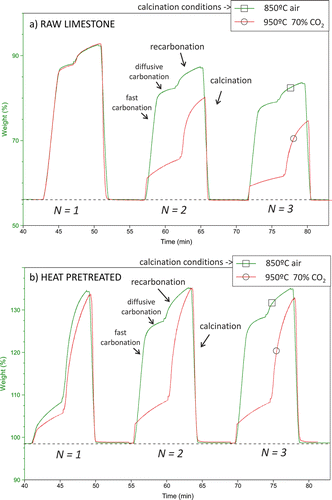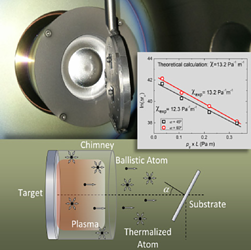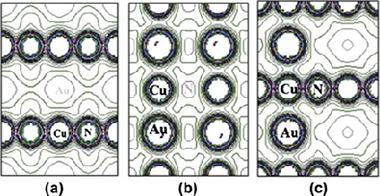Artículos SCI
2014
2014
Reactividad de Sólidos
Effect of Heat Pretreatment/Recarbonation in the Ca-Looping Process at Realistic Calcination Conditions
Valverde, JM; Sanchez-Jimenez, PE; Perez-Maqueda, LAEnergy & Fuels, 27 (2014) 4062-4067
Show abstract ▽

Even though an increasing number of pilot-scale plants are demonstrating the potential efficiency of the Ca-looping technology to capture CO2 at a commercial level, a still standing matter of concern is the loss of carbonation reactivity of the regenerated CaO by calcination, which is expected to be particularly marked at realistic conditions necessarily implying a high CO2 partial pressure in the calciner. In this work, we address the effect of previously reported strategies for sorbent reactivation, namely heat pretreatment and the introduction of a recarbonation stage before regeneration. Both techniques, either combined or separately, are shown to favor the carbonation reactivity, albeit CaO regeneration is usually carried out at low CO2 partial pressure in lab-scale tests. Novel results reported in this paper show the opposite when the sorbent is regenerated by calcination at high CO2 concentration, which is arguably due to the diverse mechanisms that rule decarbonation depending on the CO2 concentration in the calciner atmosphere. Dynamic and reversible adsorption/desorption of CO2 is thought to govern decarbonation during calcination at high CO2 partial pressure, which would be hindered by the introduction of a recarbonation stage before carbonation. Moreover, carbonation in the fast phase is severely hampered as a result of the marked loss of reactivity of the surface of CaO regenerated under high CO2 partial pressure. On the other hand, heat pretreatment and harsh calcination conditions lead to a notable enhancement of diffusion, which would favor the process efficiency. In these conditions, diffusion controlled carbonation becomes a significant contribution to CaO conversion, which is notably increased by prolonging the carbonation stage. Heat pretreatment allows also reducing the calcination temperature at high CO2 partial pressure while still achieving full decarbonation in short residence times.
Junio, 2014 | DOI: 10.1021/ef5007325
Nanotecnología en Superficies y Plasma
On the Deposition Rates of Magnetron Sputtered Thin Films at Oblique Angles
Alvarez, R; Garcia-Martin, JM; Lopez-Santos, MC; Rico, V; Ferrer, FJ; Cotrino, J; Gonzalez-Elipe, AR; Palmero, APlasma Processes and Polymers, 11 (2014) 571-576
Show abstract ▽

We describe here the deposition of thin films using magnetron sputtering at oblique angles. General relations between the deposition rates of the films and experimental parameters, such as gas pressure or substrate tilt angles, are deduced and experimentally tested. The model also permits the direct determination of the thermalization mean free path of the sputtered particles in the plasma gas, a key parameter defining the balance between ballistic and diffusive flows in the deposition reactor. The good agreement between experimental and calculated results supports the validity of our description, which becomes a useful tool to explain the main features of the magnetron sputtering deposition of thin films at oblique angles.
Junio, 2014 | DOI: 10.1002/ppap.201300201
Nanotecnología en Superficies y Plasma
Osteoconductive Potential of Barrier NanoSiO(2) PLGA Membranes Functionalized by Plasma Enhanced Chemical Vapour Deposition
Terriza, A; Vilches-Perez, JI; de la Orden, E; Yubero, F; Gonzalez-Caballero, JL; Gonzalez-Elipe, AR; Vilches, J; Salido, MBioMed Research International, 2014 (2014) 253590
Show abstract ▽
The possibility of tailoring membrane surfaces with osteoconductive potential, in particular in biodegradable devices, to create modified biomaterials that stimulate osteoblast response should make them more suitable for clinical use, hopefully enhancing bone regeneration. Bioactive inorganic materials, such as silica, have been suggested to improve the bioactivity of synthetic biopolymers. An in vitro study on HOB human osteoblasts was performed to assess biocompatibility and bioactivity of SiO2 functionalized poly(lactide-co-glycolide) (PLGA) membranes, prior to clinical use. A 15 nm SiO2 layer was deposited by plasma enhanced chemical vapour deposition (PECVD), onto a resorbable PLGA membrane. Samples were characterized by X-ray photoelectron spectroscopy, atomic force microscopy, scanning electron microscopy, and infrared spectroscopy (FT-IR). HOB cells were seeded on sterilized test surfaces where cell morphology, spreading, actin cytoskeletal organization, and focal adhesion expression were assessed. As proved by the FT-IR analysis of samples, the deposition by PECVD of the SiO2 onto the PLGA membrane did not alter the composition and other characteristics of the organic membrane. A temporal and spatial reorganization of cytoskeleton and focal adhesions and morphological changes in response to SiO2 nanolayer were identified in our model. The novedous SiO2 deposition method is compatible with the standard sterilization protocols and reveals as a valuable tool to increase bioactivity of resorbable PLGA membranes.
Mayo, 2014 | DOI: 10.1155/2014/253590
Materiales de Diseño para la Energía y Medioambiente
Biomechanical properties of the tomato (Solanum lycopersicum) fruit cuticle during development are modulated by changes in the relative amounts of its components
Espana, L; Heredia-Guerrero, JA; Segado, P; Benitez, JJ; Heredia, A; Dominguez, ENew Phytologist, 202 (3) (2014) 790-802
Show abstract ▽

Keywords:
attenuated total reflectance–Fourier transform infrared (ATR-FTIR);biomechanics;cuticle;cutin;flavonoids;tomato (Solanum lycopersicum) fruit
Summary
- In this study, growth-dependent changes in the mechanical properties of the tomato (Solanum lycopersicum) cuticle during fruit development were investigated in two cultivars with different patterns of cuticle growth and accumulation.
- The mechanical properties were determined in uniaxial tensile tests using strips of isolated cuticles. Changes in the functional groups of the cuticle chemical components were analysed by attenuated total reflectance–Fourier transform infrared (ATR-FTIR).
- The early stages of fruit growth are characterized by an elastic cuticle, and viscoelastic behaviour only appeared at the beginning of cell enlargement. Changes in the cutin:polysaccharide ratio during development affected the strength required to achieve viscoelastic deformation. The increase in stiffness and decrease in extensibility during ripening, related to flavonoid accumulation, were accompanied by an increase in cutin depolymerization as a result of a reduction in the overall number of ester bonds.
- Quantitative changes in cuticle components influence the elastic/viscoelastic behaviour of the cuticle. The cutin:polysaccharide ratio modulates the stress required to permanently deform the cuticle and allow cell enlargement. Flavonoids stiffen the elastic phase and reduce permanent viscoelastic deformation. Ripening is accompanied by a chemical cleavage of cutin ester bonds. An infrared (IR) band related to phenolic accumulation can be used to monitor changes in the cutin esterification index.
Mayo, 2014 | DOI: 10.1111/nph.12727
Nanotecnología en Superficies y Plasma
Structure determination and electronic structure of Cu3Au0.5N
Soto, G; Ponce, I; Moreno, MG; Yubero, F; De la Cruz, WJournal of Alloys and Compounds, 594 (2014) 48-51
Show abstract ▽

This study investigated the formation of a Cu3Au-nitride alloy using both experimental and computational methods. The alloy was produced as thin film by sputtering a Cu3Au target in a nitrogen atmosphere. The films were characterized for structure and composition by spectroscopic and diffraction techniques. The structure was established by Rietveld and ab inito methods. The structure is cubic and of the Fm3m space group, with a composition close to Cu6AuN2. Relative to the Cu3N structure, the Cu atoms occupy the faces, Au the half corners, and N the centers. The compound is a narrow-gap semiconductor with a positive hall coefficient that could be used for infrared detection.
Mayo, 2014 | DOI: 10.1016/j.jallcom.2014.01.113
- ‹ anterior
- 275 of 420
- siguiente ›














